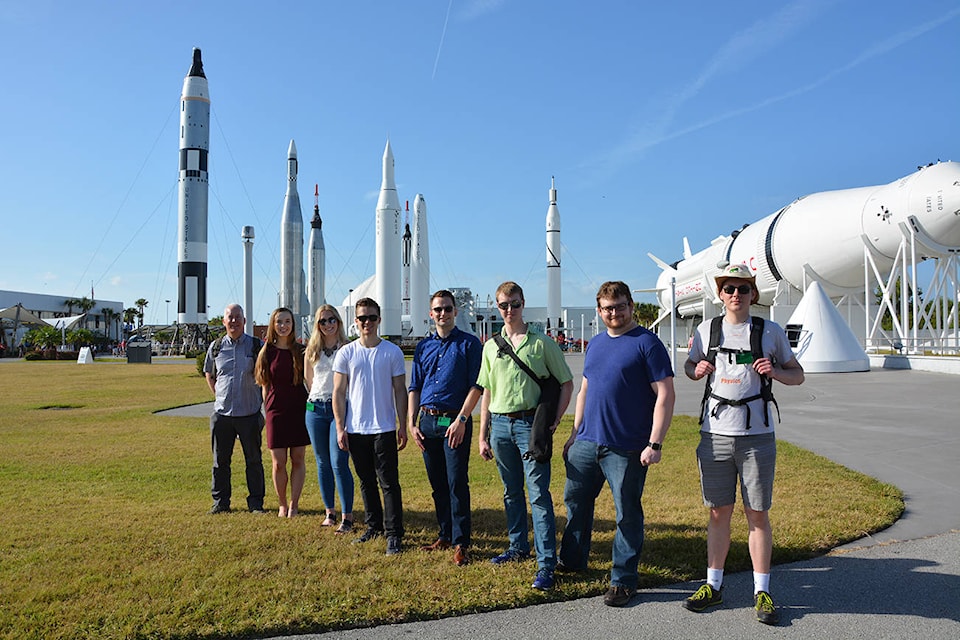Watching the rocket lift off some three kilometres from the launch pad was the culmination of three-and-a-half years of work for a Lacombe Composite graduate.
Charles Nokes, a University of Alberta student, joined the AlbertaSat Ex-Alta 1 satellite team about eight or nine months into the project. And on Tuesday, he had a front row seat to the launch of the first ever made in Alberta satellite.
Ex-Alta 1 was blasted off from the Kennedy Space Center by the Atlas V rocket at 11:11 a.m. EDT Tuesday morning.
But now they wait until the true test of all their work begins.
By mid-May, Nokes, 23, and the team expect the satellite to be deployed into space from the International Space Station and it will begin to study space weather.
“We’ll have to have everything ready to start talking to it and the mission will start in earnest,” said Nokes, systems engineer and project manager. “Yes this is a huge milestone and a risky part of putting something into space, but now the next part is the critical moment when we’ll see if our work paid off.
“We can’t fix it if it goes wrong. We have to get it right the first time.”
Once deployed, it will study space weather and the Earth’s lower thermosphere flying below 400 kilometres above the planet.
A day after the launch, Nokes was on a Florida beach still elated from seeing the project go into space.
“There was a lot of crying,” said Nokes. “It was an emotional experience.”
The hope is for the small cubed satellite to orbit for a few years and then burn up upon re-entry into the atmosphere.
For the launch, they were in a viewing area some three kilometres away from the rocket. They waited at the area for about an hour and a half before the launch.
“We took everything in, you could see the rocket in the distance,” said Nokes. “Right on 11:11, we started seeing the smoke coming out from behind the rocket and it’s rising really slowly. It’s just kind of floating there for several seconds as it cleared the launch pad and then it was off over the ocean.”
Nokes said growing up in Lacombe, there was not a clear path at the time to get involved in a space mission.
“To have been fortunate enough to do this at the University of Alberta, it really changes the perception of what opportunities we have,” said Nokes.
